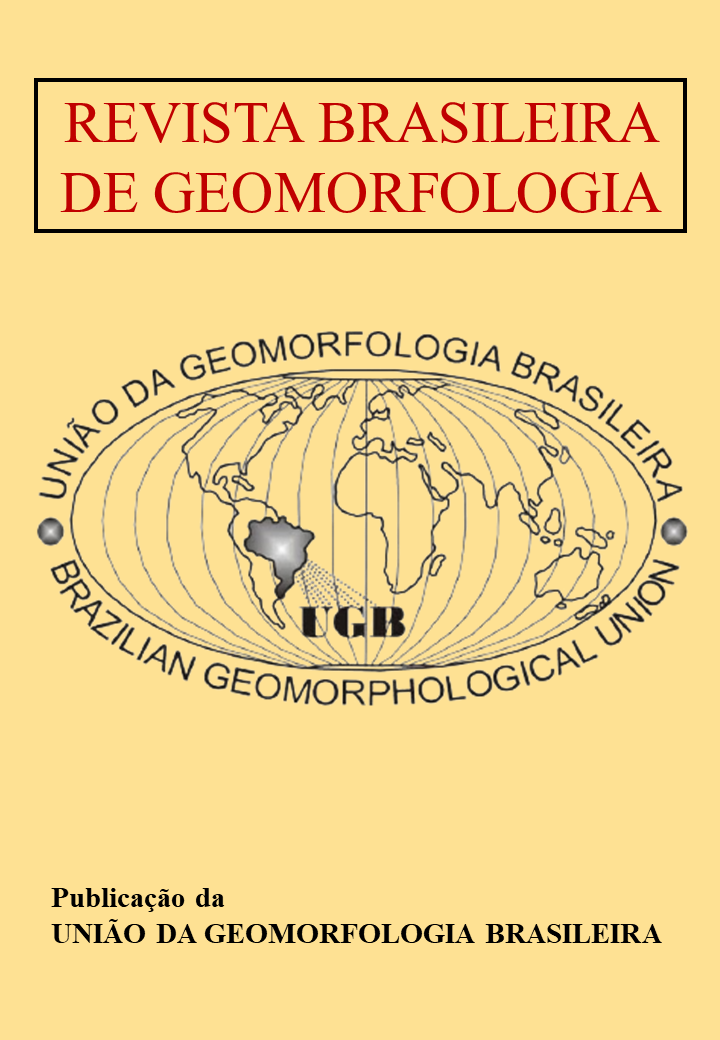Temporal trends in sand bars and water bodies on the right side of the world's largest fluvial island - Javaés River
DOI:
https://doi.org/10.20502/rbgeomorfologia.v25i1.2427Palavras-chave:
Dinâmica fluvial, Conectividade do sistema fluvial, Equilíbrio morfossedimentar, Aporte sedimentar, CerradoResumo
Bananal Island is the largest river island in the world, located in the Araguaia River basin in central-western Brazil. Studies on the Araguaia River have shown that changes in the main channel are linked to the increase in sediment input due to agricultural expansion in the Cerrado. However, very little is known about the Javaés River, on the opposite margin of Bananal Island. This study analyzed the temporal trends of sand bars and water masses in the Javaés River from 1985 to 2021. Annual mosaics of Landsat images were generated to identify the classes of water masses and sand bars. The Mann Kendall and Sen's Slope tests were used to identify trends and statistical significance of changes over time. The results indicated an increase of 57% (6.5 km²) in the areas of sand bars and a reduction of 39% (15.2 km²) in water bodies. The tests revealed significant trends with an increase in bars and a decrease in water bodies. It was observed that changes in the distribution and rates of regional precipitation, along with the expansion of anthropogenic occupation, are contributing to an increase in sediment input, in a cascade effect, affecting the balance between erosion and deposition in the Javaés River.
Downloads
Downloads
Publicado
Como Citar
Edição
Seção
Licença

Este trabalho está licenciado sob uma licença Creative Commons Attribution-NonCommercial 4.0 International License.
Autor(es) conservam os direitos de autor e concedem à revista o direito de primeira publicação, com o trabalho simultaneamente licenciado sob a Licença Creative Commons Attribution que permite a partilha do trabalho com reconhecimento da autoria e publicação inicial nesta revista.










